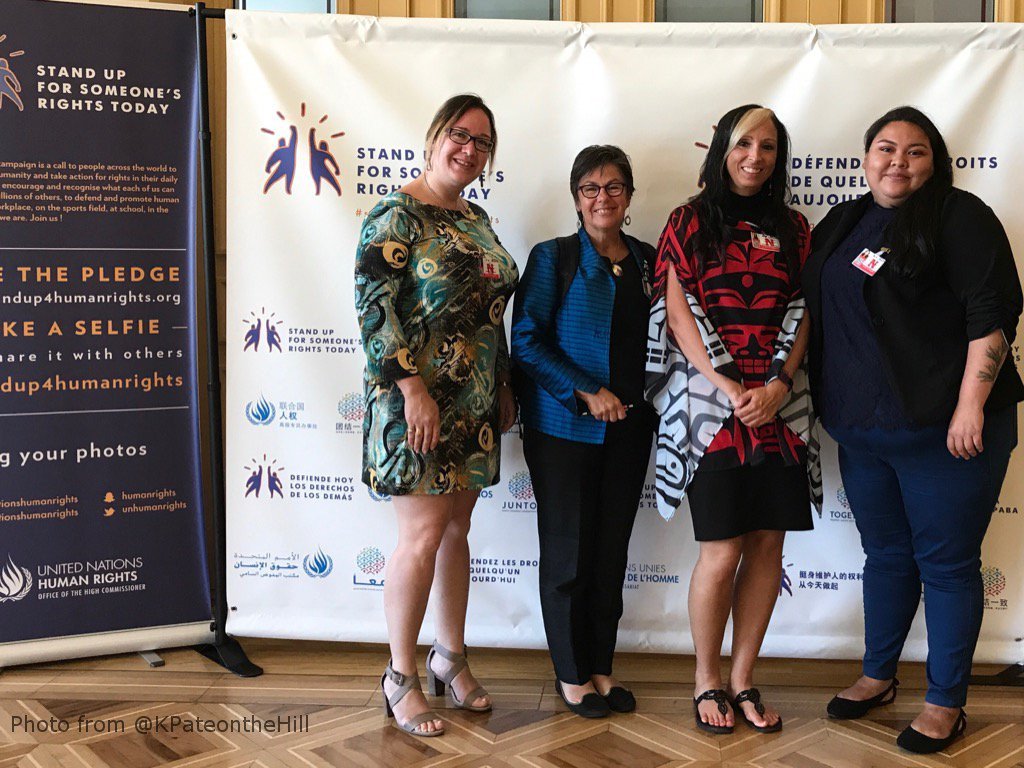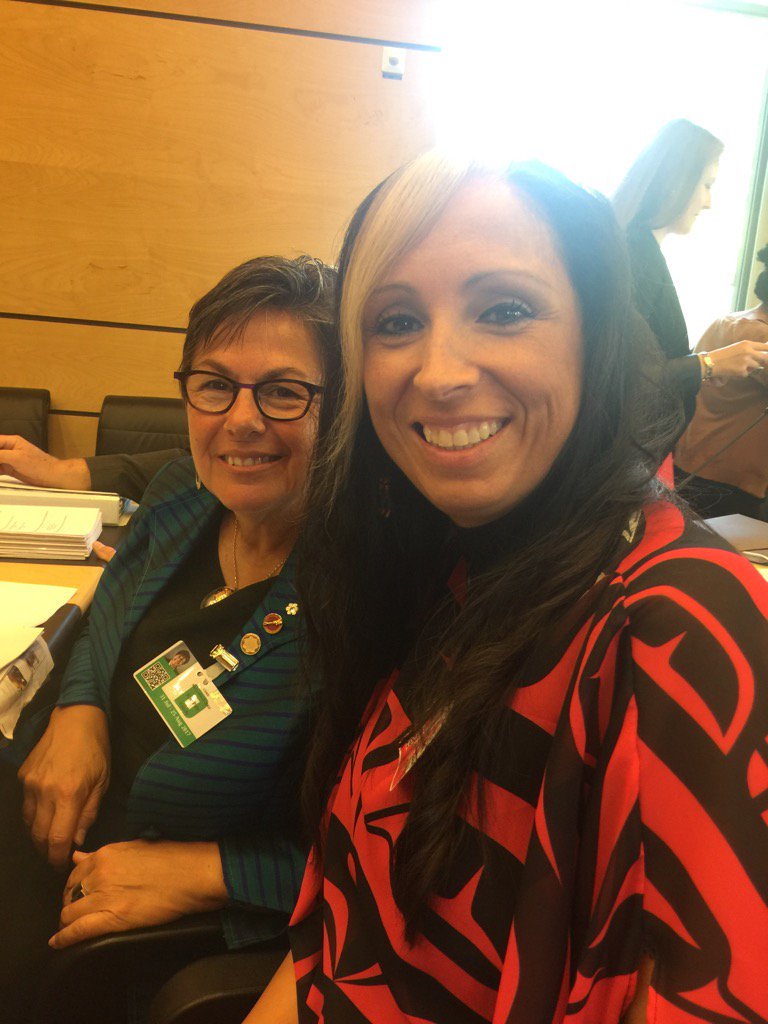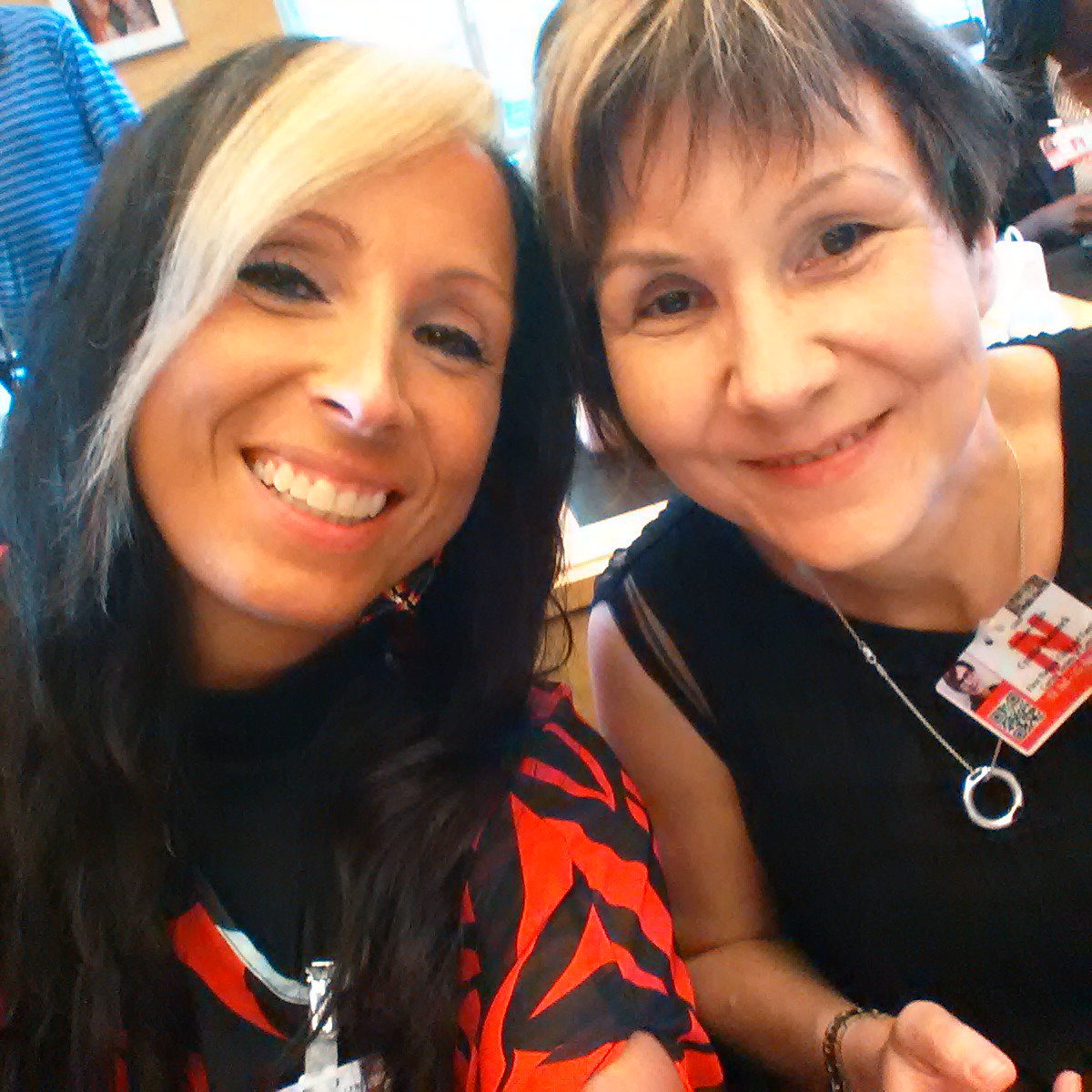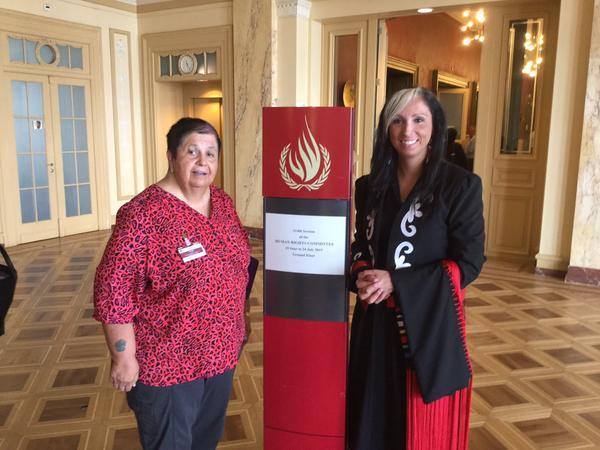
(Photo by NWAC of ONWA, CAEFS, myself and NWAC at UN) On August 14th and 15th, 2017, Canada appeared before the United Nations (UN) Committee for the Elimination of Racial Discrimination (CERD) to account for its efforts to eliminate racial discrimination in Canada. As part of this process, Indigenous groups and non-government organizations (often referred to by the UN as “civil society”) are permitted to submit “shadow reports” on Canada’s racial discrimination record. These reports do not form part of Canada’s official report to the UN, but UN committees, like CERD, use these shadow reports to get a more informed picture of what is happening in Canada. CERD is a treaty body which meets to review state parties progress or lack thereof under the Convention for the Elimination of All Forms of Racial Discrimination. This Convention was passed by the United Nations General Assembly in 1965 and came into force in 1969. Canada signed on to this convention in 1966. Therefore, Canada appears before CERD to account for its practices in relation to the convention before committee members from all over the world. https://treaties.un.org/pages/ViewDetails.aspx?src=IND&mtdsg_no=IV-2&chapter=4&lang=en In this convention, state parties, like Canada, have agreed to core principles including: “universal respect for and observance of human rights and fundamental freedoms for all, without distinction as to race, sex, language or religion”. The convention also includes statements that the United Nations:
- “condemned colonialism and all practices of segregation and discrimination”;
- “affirms the necessity of speedily eliminating racial discrimination throughout the world in all its forms and manifestations”;
- “any doctrine of superiority based on racial differentiation is scientifically false, morally condemnable, socially unjust and dangerous, and that there is no justification for racial discrimination, in theory or in practice, anywhere”; and
- “convinced that the existence of racial barriers is repugnant to the ideals of any human society”.
The convention goes on to define racial discrimination as follows: “In this Convention, the term “racial discrimination” shall mean any distinction, exclusion, restriction or preference based on race, colour, descent, or national or ethnic origin which has the purpose or effect of nullifying or impairing the recognition, enjoyment or exercise, on an equal footing, of human rights and fundamental freedoms in the political, economic, social, cultural or any other field of public life.”
International Convention on the Elimination of All Forms of Racial Discrimination
Knowing that Canada would promote itself in a positive light and gloss over its deplorable human rights record in relation to Indigenous peoples, especially the dual disadvantage of racial and gender discrimination experienced by Indigenous women and girls specifically, several of my colleagues in solidarity agreed we needed to ensure these crisis issues were highlighted for the CERD committee. To this end, I partnered with several organizations that do a great deal of work advocating against injustices for Indigenous women and girls, to submit a shadow report on “racial discrimination” in Canada. Our collaboration included the Feminist Alliance for International Action (FAFIA), the Canadian Association of Elizabeth Fry Societies (CAEFS), the Ontario Native Women’s Association (ONWA), and myself as Chair in Indigenous Governance at Ryerson University. http://tbinternet.ohchr.org/Treaties/CERD/Shared%20Documents/CAN/INT_CERD_NGO_CAN_28045_E.pdf

(Senator Kim Pate CAEFS and I at UN) One of the downsides to these formal processes, is the very limited nature of these reports, in that we cannot canvass all issues completely. Knowing this, we decided to focus on some of the most urgent issues, knowing that other urgent issues could not be highlighted. We also took into account that Cindy Blackstock of the First Nation Child and Family Caring Society would be submitting her own report specific to First Nations children in care. http://tbinternet.ohchr.org/Treaties/CERD/Shared%20Documents/CAN/INT_CERD_NGO_CAN_27941_E.pdf

(Cindy Blackstock from FNCFCS and I at UN) There were many other written and oral submissions from Indigenous groups which highlighted other issues related to free, prior and informed consent, Indigenous land rights and the impact of development on Indigenous peoples and lands. So we tried as best as possible to avoid any duplication. These reports can be accessed at the United Nations Human Rights website: http://tbinternet.ohchr.org/_layouts/TreatyBodyExternal/Countries.aspx?CountryCode=CAN&Lang=EN It was good to work with the late Art Manuel’s family members and Indigenous colleagues while in Geneva. It reminds me of the importance of Art’s lifelong work at the international level on Indigenous rights, land title and self-determination.

(Art Manuel and I in Geneva at a different committee) When I attended at the United Nations in Geneva, Switzerland there were so many groups who had traveled there to present to CERD, that we were only afforded 2-3 minutes maximum to make an oral presentation. As a result of so many presenters, the committee was not able to ask many questions. What follows is my oral presentation to the committee, keeping in mind we made more fulsome presentations at informal meetings and we referred them to our much more detailed written submission:
ORAL PRESENTATION (2-3 minutes):
Kwe, my name is Pam Palmater from the sovereign Mikmaw Nation and I am speaking on behalf of FAFIA, CAEFS, ONWA, RU on racial discrimination against Indigenous women and girls in Canada.
Canada has long targeted us as the primary means to eliminate our Nations to free up land for settlement. Therefore, our experiences are unique as Indigenous peoples and should not be compared to racialized settler groups.
Canada’s Indian Act created rules to banish Indigenous women and our children from our Nations – some of which are still in effect and found by UN human rights bodies to be a root cause of racial and gender discrimination.
Our children were stolen by Indian agents only to become victims of physical and sexual abuse in residential schools.
We were and are also targeted for forced/coerced sterilizations to reduce the population of our Nations.
The Truth and Reconciliation Commission report found all of this to be evidence of cultural, physical and biological genocide.
The direct result of this racialized and gendered discrimination is deteriorating socio-economic conditions for Indigenous women and girls:
– Indigenous peoples are only 4% population but 50% of all kids in foster care are Indigenous;
– 60% of Indigenous children live in poverty and the majority of their homes are headed by single Indigenous mothers;
– Indigenous women and girls often lack of access to proper healthcare, education and the basics of food and water;
– There is an 8-15 year reduced life expectancy and we suffer some of the highest suicide rates in the world;
– There are thousands of murdered & disappeared Indigenous women and girls;
– Indigenous girls are over-represented in human sex trafficking, where traffickers often taken straight from foster care;
– Numbers of Indigenous women in prisons has increased by 83% since 2003 and the majority were victims of residential schools, foster care and/or sexual abuse;
– 90% Indigenous women in jail now have their children forced into foster care where they are sexually abused at disproportionate rates;
None of these grim statistics is due to any defect in Indigenous women, girls, their families, communities or Nations – they are not the authors of own misfortune.
Our report shows the direct link between Canada’s racialized and gendered discrimination as the root cause of poverty, which is the primary reason Indigenous children are stolen and placed into foster care; which acts as a direct pipeline to human sex trafficking, over-incarceration in prison, and high rates of murders and disappearances.
Recommendations:
(1) Implement UN (CEDAW & CERD) recommendations to eliminate sex discrimination from the Indian Act by ensuring that in Bill S-3, currently before the Canadian Parliament, Indian women and their descendants, born prior to 1985, are entitled to the same 6(1)(a) status as Indian men and their descendants;
(2) Urgently provide adequate needs-based funding to all First Nation social programs (for all First Nation people on and off-reserve) at least on par with provincial levels with extra to account for historical under-funding (realizing that these programs are resourced from Indigenous lands and resources);
(3) Restrict the use of prison for Indigenous and racialized women and girls and implement existing legislation to de-carcerate them (especially those with disabling mental health issues);
(4) (a) Implement the recommendations of the CEDAW Article 8 Inquiry into the murders and disappearances of Indigenous women and girls, while at the same time take immediate steps to actively protect Indigenous women & girls from violence by all parties – including state parties and their police forces;
(b) Direct Canada to ensure the national inquiry (i) reviews all individual cases of murdered and disappeared Indigenous women & girls and (ii) investigate police racism, abuse and sexualized violence against Indigenous women & girls (all within a human rights framework).
We have tried our best to build upon the foundations built by lifelong Indigenous women’s advocates like Sharon McIvor, who have helped educate UN committees on the ongoing crisis for Indigenous women and children in Canada in the hopes they will pressure Canada to finally take action.

(Sharon McIvor and I at the UN before a different committee)
SPECIAL THANK YOU Welal’in to Ryerson University’s Aboriginal Education Council for supporting my travel to the United Nations so that we could do this important work. Please see my related videos on my Youtube channel: https://www.youtube.com/watch?v=i73EueU62tM&t=855s https://www.youtube.com/watch?v=bI3-Vc01InQ&t=5s https://www.youtube.com/watch?v=I2p_ScohgJc&t=1167s